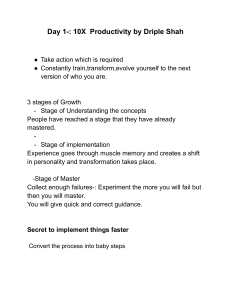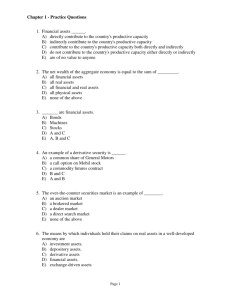3.3 THE MEANING OF PRODUCTIVITY
advertisement
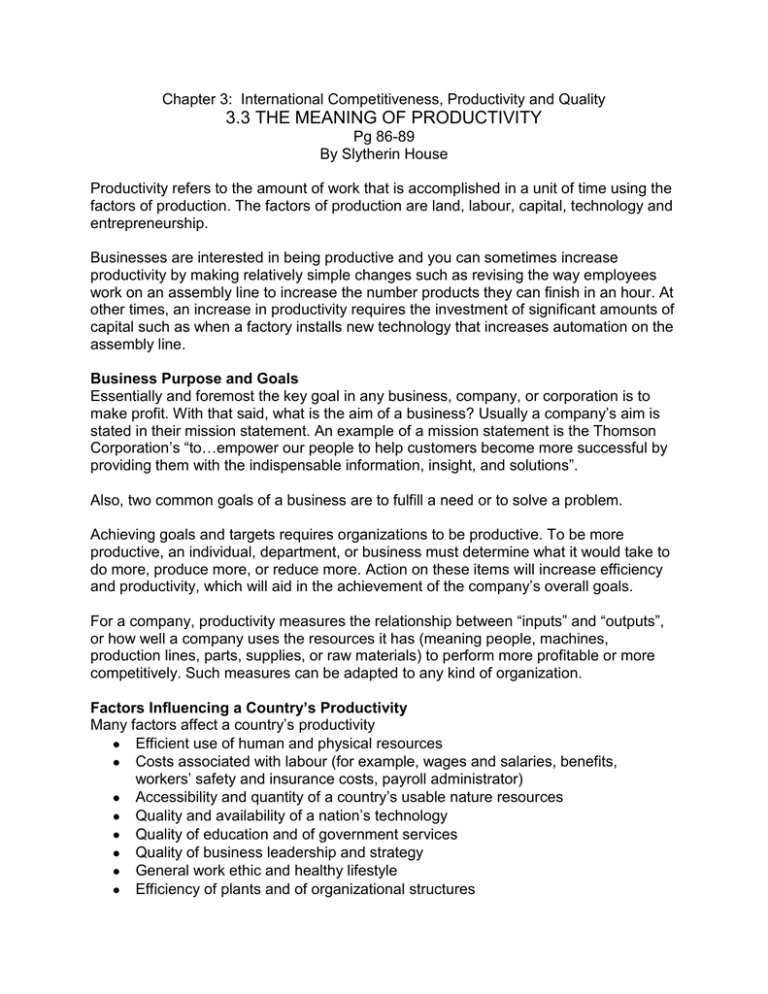
Chapter 3: International Competitiveness, Productivity and Quality 3.3 THE MEANING OF PRODUCTIVITY Pg 86-89 By Slytherin House Productivity refers to the amount of work that is accomplished in a unit of time using the factors of production. The factors of production are land, labour, capital, technology and entrepreneurship. Businesses are interested in being productive and you can sometimes increase productivity by making relatively simple changes such as revising the way employees work on an assembly line to increase the number products they can finish in an hour. At other times, an increase in productivity requires the investment of significant amounts of capital such as when a factory installs new technology that increases automation on the assembly line. Business Purpose and Goals Essentially and foremost the key goal in any business, company, or corporation is to make profit. With that said, what is the aim of a business? Usually a company’s aim is stated in their mission statement. An example of a mission statement is the Thomson Corporation’s “to…empower our people to help customers become more successful by providing them with the indispensable information, insight, and solutions”. Also, two common goals of a business are to fulfill a need or to solve a problem. Achieving goals and targets requires organizations to be productive. To be more productive, an individual, department, or business must determine what it would take to do more, produce more, or reduce more. Action on these items will increase efficiency and productivity, which will aid in the achievement of the company’s overall goals. For a company, productivity measures the relationship between “inputs” and “outputs”, or how well a company uses the resources it has (meaning people, machines, production lines, parts, supplies, or raw materials) to perform more profitable or more competitively. Such measures can be adapted to any kind of organization. Factors Influencing a Country’s Productivity Many factors affect a country’s productivity Efficient use of human and physical resources Costs associated with labour (for example, wages and salaries, benefits, workers’ safety and insurance costs, payroll administrator) Accessibility and quantity of a country’s usable nature resources Quality and availability of a nation’s technology Quality of education and of government services Quality of business leadership and strategy General work ethic and healthy lifestyle Efficiency of plants and of organizational structures Size of both domestic and international markets for a country’s products and services Amount of support given to research and development When Henry Ford introduced the assembly line in the early part of the twentieth century, it became possible to mass-produce automobiles, making them affordable for the average family. In a country whose business cannot afford to install this new technology, the productivity cannot match that of countries with the new technology. A country’s standard of living and quality of life are determined by its productivity. Maintaining efficiency and high productivity is an ongoing pursuit, as you can see from the examples of the Ford assembly line and the General Motors assembly line shown in the early 2000s.


